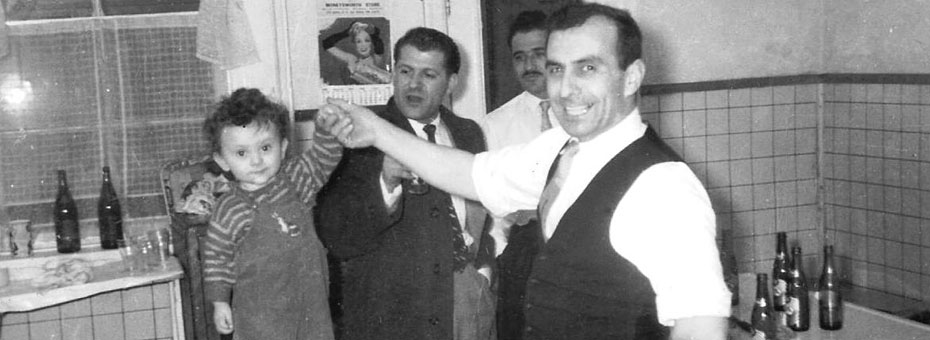I grew up in a Greek restaurant, the Imperial Grill. It was a family diner on Toronto’s Queen Street East, across the street from St. Michael’s Hospital and Metropolitan United Church, and a few blocks from Toronto’s chic shopping district. I love restaurants. They’re the most basic kind of factory, and play a prominent role in my books, (usually as the setting for boozy commiseration.)
The Imperial Grill was a lean enterprise, and my folks, Frank and Helen, lean thinkers, though they would simply call it common sense. I can hear my father’s booming voice, “This is news?! Of course you take care of customers! Of course you don’t waste anything! Of course you keep inventory low! Any idiot knows that!”
My folks had a visceral understanding of the most basic concepts, like Value, and of some of the more abstract, like heijunka. For example, Mama, chief scheduler, used a cork board to load the high and low runner lines. She buffered high volume, high frequency, low cycle time items like burgers and sandwiches with inventory, and low volume, low frequency orders, high cycle time items, like streak tartar, with lead time. Of course, she’d never mix high and low runners on the same line. “It would confuse Uncle Louie.”
I’d like to focus on the most basic concept: Value, our alpha and omega.
If we get Value wrong, everything else goes wrong. My coaching experience suggests this is still our most common failure mode. So what is Value? Here are some common definitions:
- What the customer is willing to pay for,
- Activity that changes the form, fit of function of a product,
- Quality divided by Cost
Each of these is helpful and correct in its own way but not quite sufficient. Value must be felt viscerally, and this requires a direct, personal relationship with the customer. (This is the second of the Four Rules – with a tip of the hat to my colleague, Dr. Steven Spear, who first articulated them.) We have to understand who our various customers are and what’s important to them. It’s tricky because customers can’t always articulate what’s important.
What did customers expect of the Imperial Grill? Good food at fair prices, to be sure. But they also expected a warm accepting atmosphere, where they could kibitz with Mama, Uncle Louie, and the rest of the crew.
Value also requires embedded tests that give you immediate OK/Not OK feedback. I remember my Dad looking into the plates as they came back. Did the customers eat everything? If not, what did they leave behind, and why? Often he’d ask for direct feedback.
“Hey, Mabel, you didn’t you eat your moussaka! You don’t like it?”
“Oh, no Frankie, it was delicious! But it was more than I could eat.”
“But you liked it! Okay, Spyro, wrap it up for the lady. She’ll have it for dinner!”
I saw the same kind of direct personal connections at our old plant, Toyota Motor Manufacturing Canada (TMMC), in the daily meetings between internal suppliers and customers.
“How’d we do today, Freddie?”
“Not bad, Rachel, except for excess sealer and weld burrs in the usual places, four and six of each, respectively. You know they affect how the quarter glass sets, which means ergonomic problems and water leaks. How’s that kaizen coming?”
Value was clearly understood by both supplier and customer. Value was direct and personal – Freddie and Rachel having a stand-up meeting every day, binary embedded tests telling us whether we were OK/Not OK and focused action on abnormalities.
How do you get people to care in this manner? That may be the leader’s biggest challenge.
My folks ran the Imperial Grill for 40 years. They provided good food at fair prices and a warm accepting atmosphere, and put three kids through college. We lost my dad last year. My most poignant metaphor for Value, and connection, remains Dad looking into the plate and asking Mable why she didn’t eat her moussaka.





